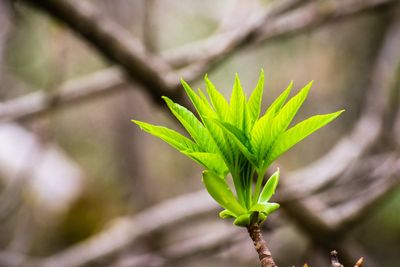Horse Chestnut Cutting Propagation
There are a few ways to propagate this tree. Growing from the dropped conkers is one way of getting them started. You may ask, “will horse chestnuts grow from cuttings?”. They will, and it is actually one of the easiest ways of horse chestnut cutting propagation. You may take young softwood cuttings in spring or hardwood cuttings in autumn. Take cuttings from the youngest trees available, as immature cuttings reproduce best.
How to Take Horse Chestnut Cuttings
Learning when and how to take horse chestnut cuttings often determines your success in growing this tree. Take hardwood cuttings in autumn when leaves fall off the horse chestnut tree. These should barely bend. Take these from dormant branches about an inch around. Softwood cuttings are best clipped in spring. They will be tender and bendable. Rooting horse chestnut cuttings is fairly simple. Keep the cutting oriented properly (right-side up). Take cuttings that are about 4 to 6 inches (10-15 cm.) long and about the diameter of a large crayon. Start off by taking your starts from the terminal end of the branch. Scrape the bark off the bottom of the cutting in a couple of spots. This promotes faster root growth and is also a good way to keep them right side up when you take cuttings from further down the stem. You may dip cuttings in a rooting hormone before sticking them if you like. Make sure the hormone is not out of date. Cuttings will likely take root without treatment. When growing horse chestnut cuttings, root them in porous, well-draining soil. Add coarse sand to the mix, or perlite if you have it on hand. Some sources recommend a mix of pine bark at 50% with the remaining ingredient being regular potting soil. Quick drainage and enough water retention to keep the soil moist is what you want. You may use a deep propagation tray or stick several cuttings into a container. Only about 2 inches (5 cm.) of the cutting should be visible. When sticking several in a pot together, allow a few inches (5 to 10 cm.) between them, or enough room to work with them later without damaging the young roots. Softwood cuttings will likely need more attention, as they’ll be starting during the summer heat. Keep them out of the direct sun and keep the soil consistently moist. Store planted hardwood cuttings in a greenhouse or building where they won’t freeze during winter. Keep their soil moist as well. Keep them in the fridge if you’re waiting until spring to plant. Don’t tug on the cuttings to check the roots, but wait until you see greenery sprouting. Repot or plant into the ground when roots fill the container, usually a few weeks, depending on season and location.
